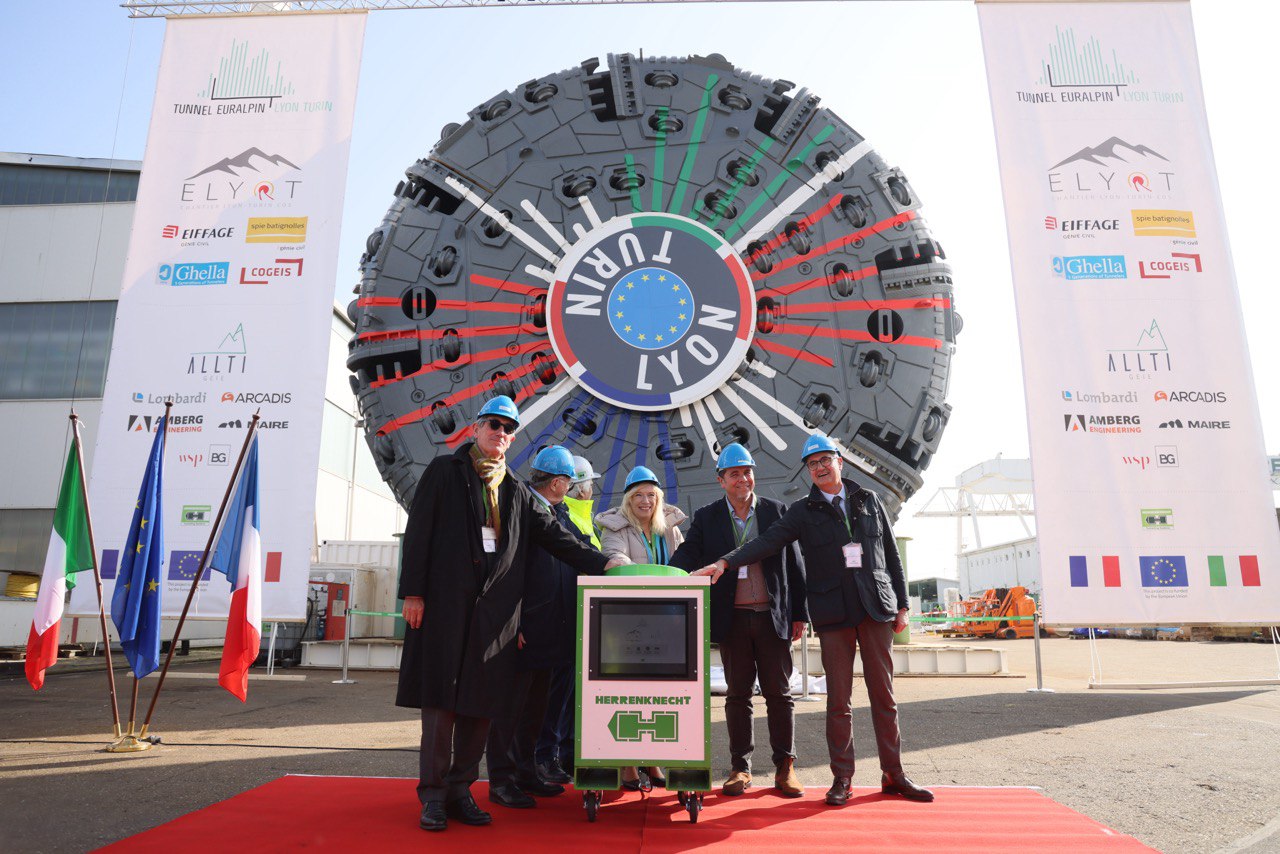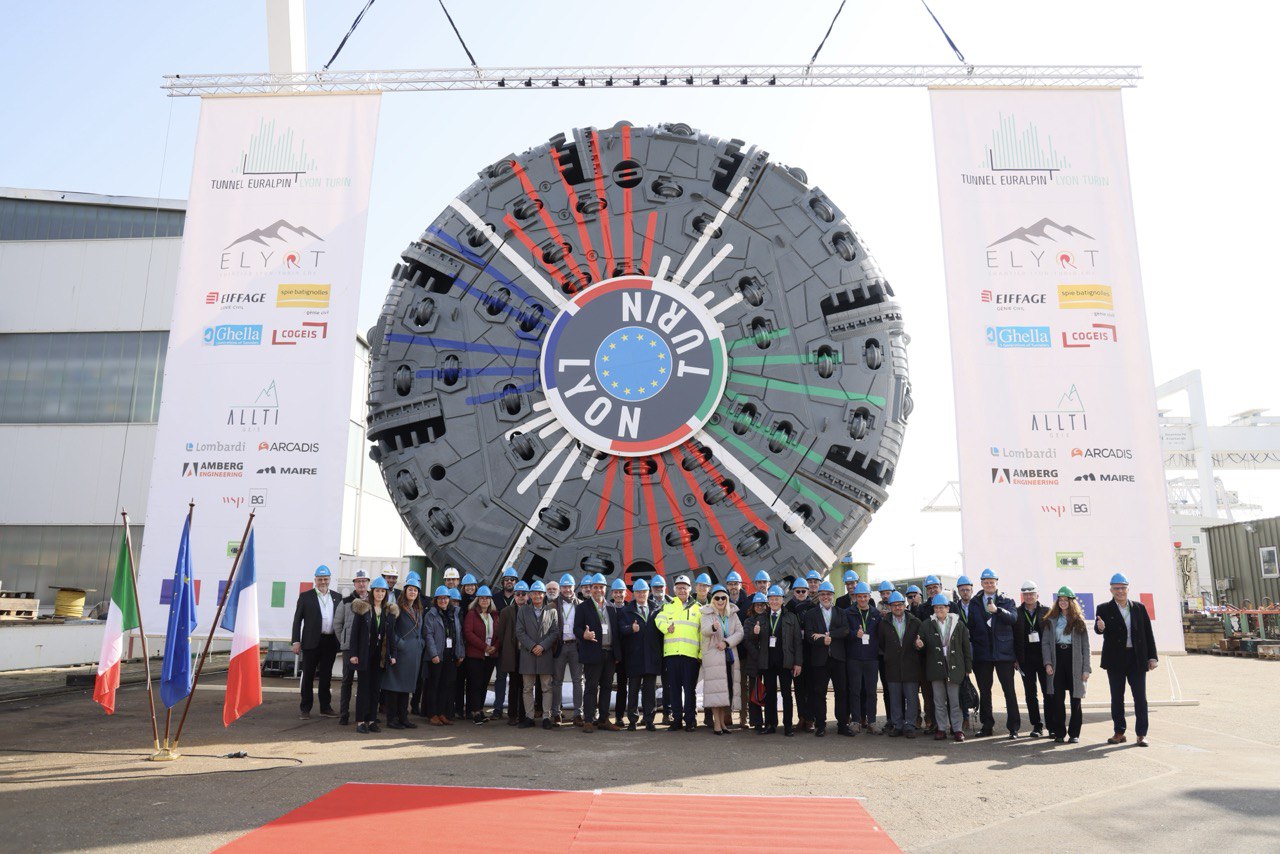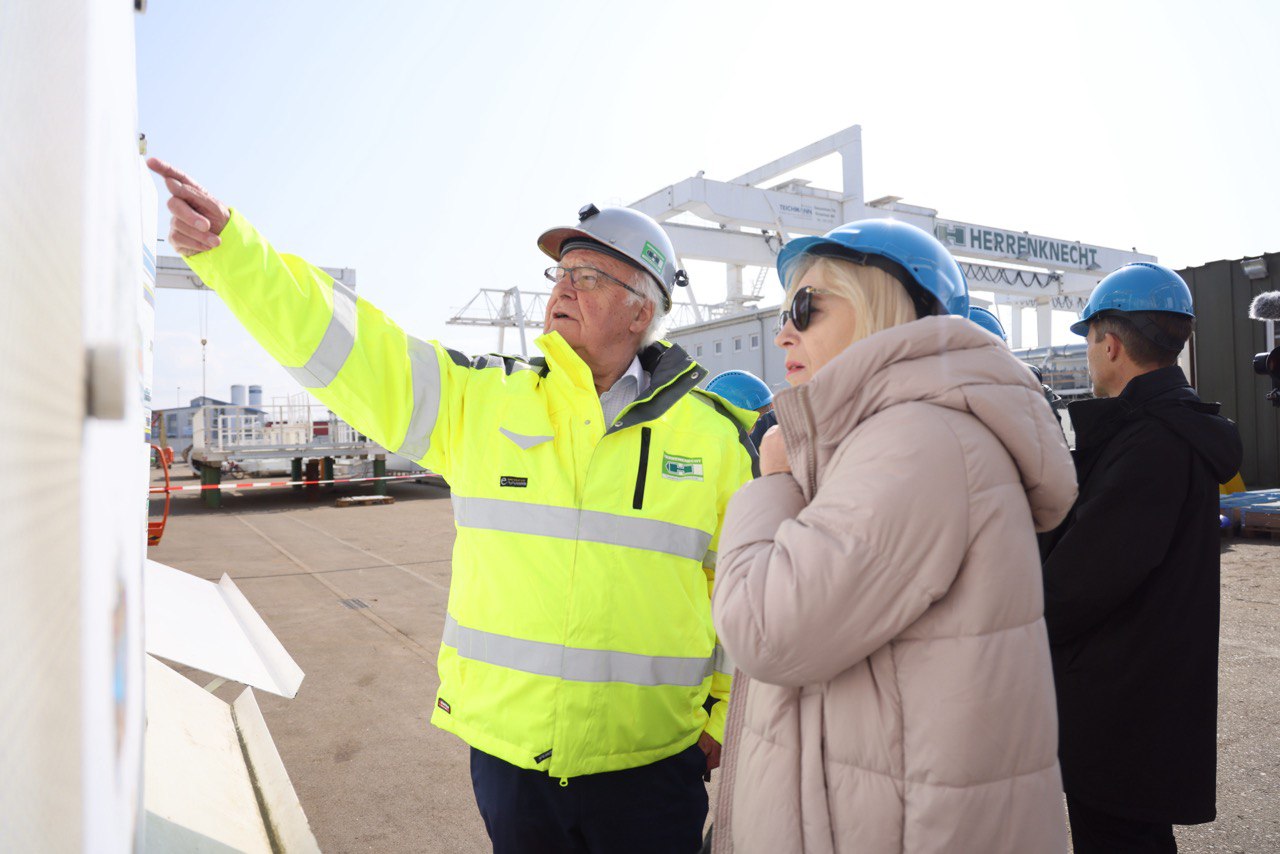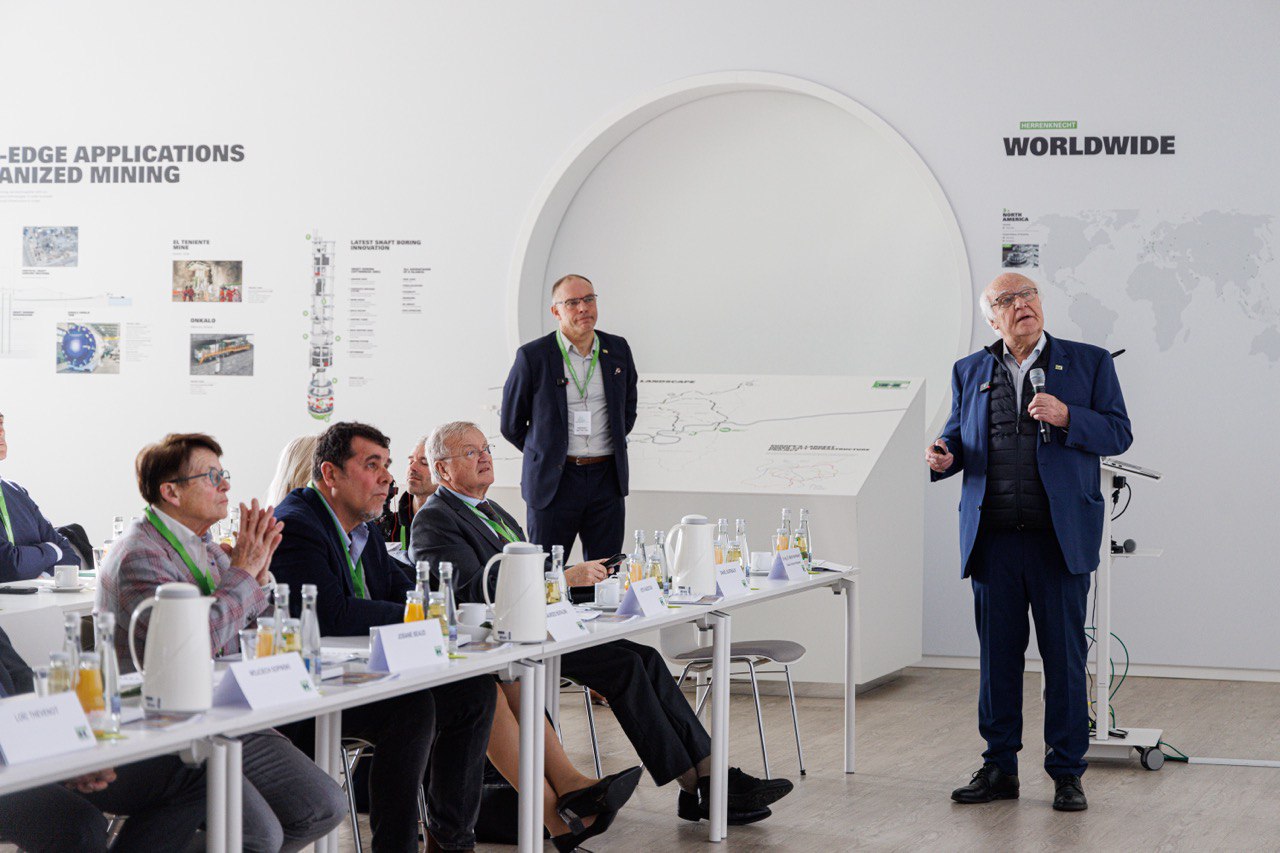The fifth tbm for the excavation of the Lyon-Turin railway tunnel has been delivered at the factory
15/02/2024 - 14:31
Together with its twin TBM it will cross the border between France and Italy
Schwanau (Germany), 29 February 2024 – The fifth of the seven TBMs for the excavation of the tunnel of the new Lyon-Turin railway line has been delivered at the Herrenknecht factory in Germany to the French-Italian group of companies ELYOT, consisting of Eiffage Génie civil (group head), Spie batignolles génie civil, Ghella and Cogéis.
TELT President, Daniel Bursaux, TELT General Director, Maurizio Bufalini, the European coordinator of the Mediterranean Corridor, Iveta Radičová and the French President of the Lyon-Turin Intergovernmental Committee, Josiane Beaud were present at the delivery ceremony.
Together with its twin TBM, delivered on 21 December 2023, this one will excavate the longest and most complex section of the Mont Cenis base tunnel, i.e. 18 km between the French and Italian border from the Villarodin/Bourget-Modane area to the Clarea underground safety site, in the deepest part of the tunnel.
The Mont Cenis base tunnel, currently under construction between France and Italy, is the central element of the cross-border section of the new Lyon-Turin railway line, whose construction is under the responsibility of TELT. It represents the heart of the Mediterranean Corridor of the new European TEN-T transport network.
The characteristics of the TBMs (Tunnel Boring Machine)
The figures and characteristics of this 'gripper' tunnel boring machine are the same of its twin TBM. It has a head with a diameter of 10.4 metres, a weight of 3200 tonnes, a length of 334 metres and a capacity of 4,900kW. For the excavation process, the TBM clamps directly on the tunnel walls with its two lateral grippers. Four pistons then push forward on the head, which rotates breaking the rock thanks to its cutters. In the centre of the machine, a 50-metre-long beam allows curved beams of 25 tonnes each to be moved and laid at the base of the tunnel, where the network of underground utilities will pass. The inverted arch of the tunnel, i.e. the upside-down arch at the base of the tunnel, which is intended to close the arch that has already been realised in the calotte, is completed with a concrete backfill.
Conceived specifically to meet the needs of the CO5 construction site, this TBM has several distinctive features, designed both to perform the initial lining of the tunnel and to deal with any geological difficulties. It is equipped with a sliding rib and metallic rib erector to accompany and block any soil movements, as well as with rock drills designed to carry out exploratory borings while progressing. Some bolting machines also allow friction or self-drilling bolts to be applied for support. Finally, there are also shotcrete workshops on the machine.
The two TBMs will start up a few weeks apart, excavating each of the base tunnel tubes from France towards Italy. Five teams of 25 people each will be required to operate each machine in three shifts, 24 hours a day, 7 days a week. The excavated material is conveyed back on a conveyor belt that carries it to the outside world. Both TBM are also equipped with an ad hoc workshop to pre-classify excavated materials.
Behind each TBM another machine called the Würm (worm) advances. This is 650 metres long and carries out the final concrete lining of the tunnel.
Digging in the heart of the mountain
The choice of this type of tunnel boring machine is dictated by several factors: the type of geology characterising the excavation areas, which here consist of relatively compact, uniform and stable formations; the great depth of the tunnels to be built, with more than 2,200 metres of overburden; and the associated geotechnical phenomena, such as detachments, or ‘popping conditions'. Not to mention the 'natural' high temperatures present at these depths, which were highlighted thanks to the exploratory tunnel of La Maddalena in Chiomonte, which made it possible to establish the specifications for this new TBM.
The CO5 construction site
The CO5 is the construction site of the Mont Cenis base tunnel that crosses the border between Italy and France underground. It starts from the Villarodin-Bourget-Modane access adit, passes through the Ambin massif and reaches the underground safety site of Clarea. At the same time as the 18 km of tunnels (for two tubes) that will be excavated by twin tunnel boring machines (36 km in total), 7.8 km of tunnels will also be dug using the conventional method. In addition to these works, all connected and logistical works will be carried out. In total, around 15 km of tunnels will therefore be constructed using the conventional method, including the underground safety area at Modane. The construction site will employ around 1,200 people.
Photo Credits Caroline Moureaux





